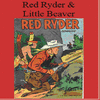The 32 Special and black powder myth is one of those stories that gets repeated so many times it passes for received wisdom...
...Around 1901 the 32 Special was introduced. Originally loaded with about a 10% edge on the 30-30 in horsepower. It was a smokeless cartridge from the get go and never intended to be loaded with black powder. Winchester used the same barrel equipment so the 32-40 single shot, the 32-40 Model 1894 and the 32 Special all shared the same twist rate.(Winchester did sell an aftermarket sight calibrated for black.) The point to be noted is that the 32-40 will outperform the 32 Special when both are loaded with black powder and the 32-40 rifle sold for less money. So black powder was never really in the 32 Special plan. Winchester touted it has having a bit more authority than the 30-30. (It would never match the 30-30 if loaded with black powder.)
Second part of the myth is the 32 Special losing accuracy with a worn barrel. This arose between WWI and WWII when Winchester found themselves with a bunch of the old smaller diameter 8 mm bullets....
But then we have this,
I think theres more to the inaccuracy claims than using incorrect bullets. I believe the 32 spl has rifling grooves that are about half as deep as the 30 cal grooves (trying to remember where I saw the rifling depth information *Edit: see below). Yes, using a bullet that fits helps quite a lot, though theres just not as much to work with with shallower rifling lands/grooves. At some point, somethings going to give. The later editor of
Cartridges of the World did some work with a couple worn 32 spl guns, and somewhat refuted the earlier claims in COTW about the inaccuracy, and "couldn't hit a flock of barns" with worn 32 spl guns, but they also used what is essentially oversize bullets in one case I believe. They got results, but the bores were worn. Cleaning older guns can help a lot in some instances also. 50 years of half-done cleaning with jacket fouling building up is probably part of the problem with many older guns that are "shot out".
RE "eastern carbines", the term doesn't have any application after the point the so-called saddle ring carbines ceased. The "eastern carbines" were otherwise identical to the saddle ring carbines, but didn't have the ring. After the point the identifying characteristics of the SRCs ceased being made in the late 20s or early 30s, the resulting carbine was just a carbine, and somewhat sadly, lost much of its former character. They look pretty much the same (other then the earlier ones still had the long fore end wood) through the post 64 period and until about the end of production, with some ventures into some "unique" locations and types of sights and barrel band locations and barrel/mag tube lengths in the ranger series.
* Edit: The SAAMI info for 32 Win Spl shows a bore diameter of .315, and groove diameter of .320, giving a rifling depth of 2 1/2 thousandths. SAAMI info for 30-30 shows bore diameter of .300, groove diameter of .308, with a rifling depth of 4 thousandths. I don't recall where I was first reading and noticed the difference, but SAMMI info shows it.




